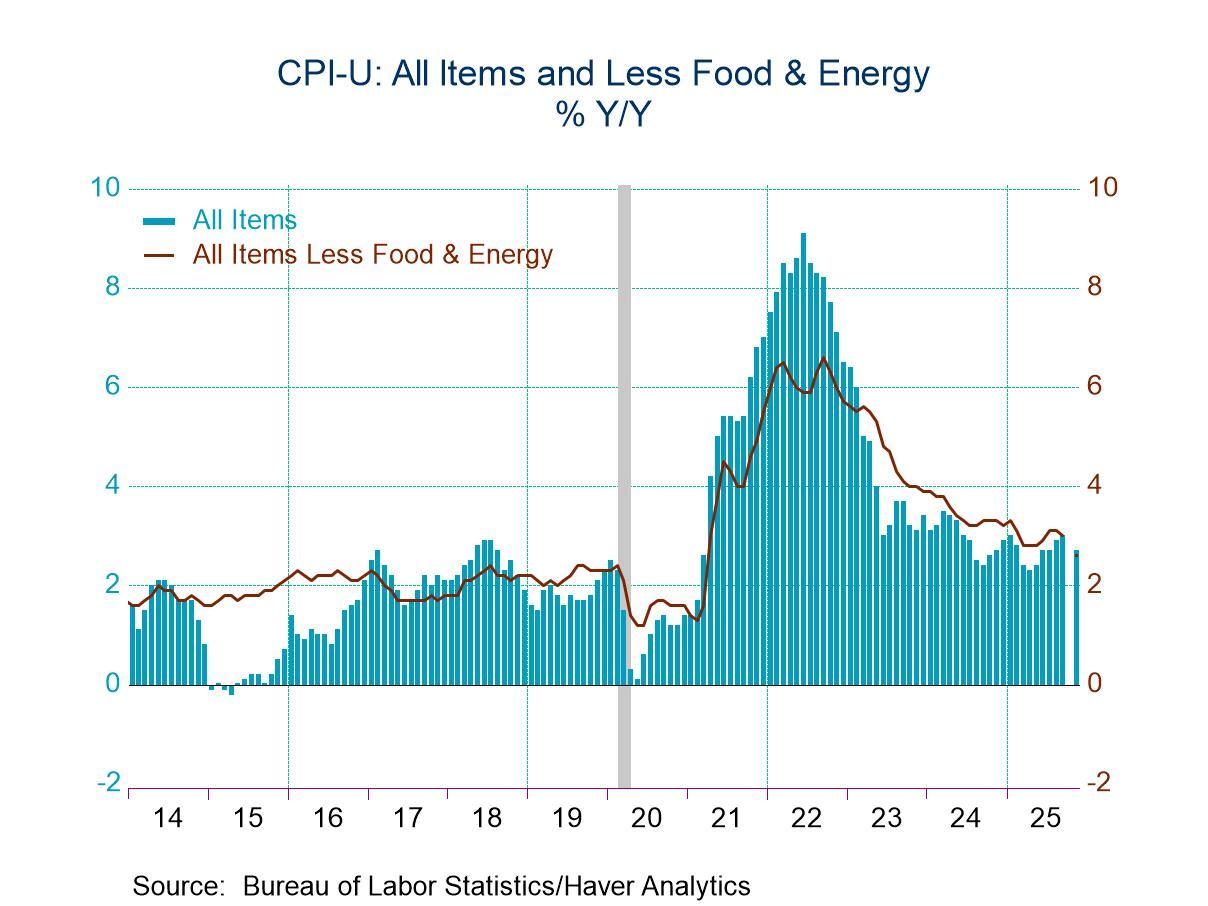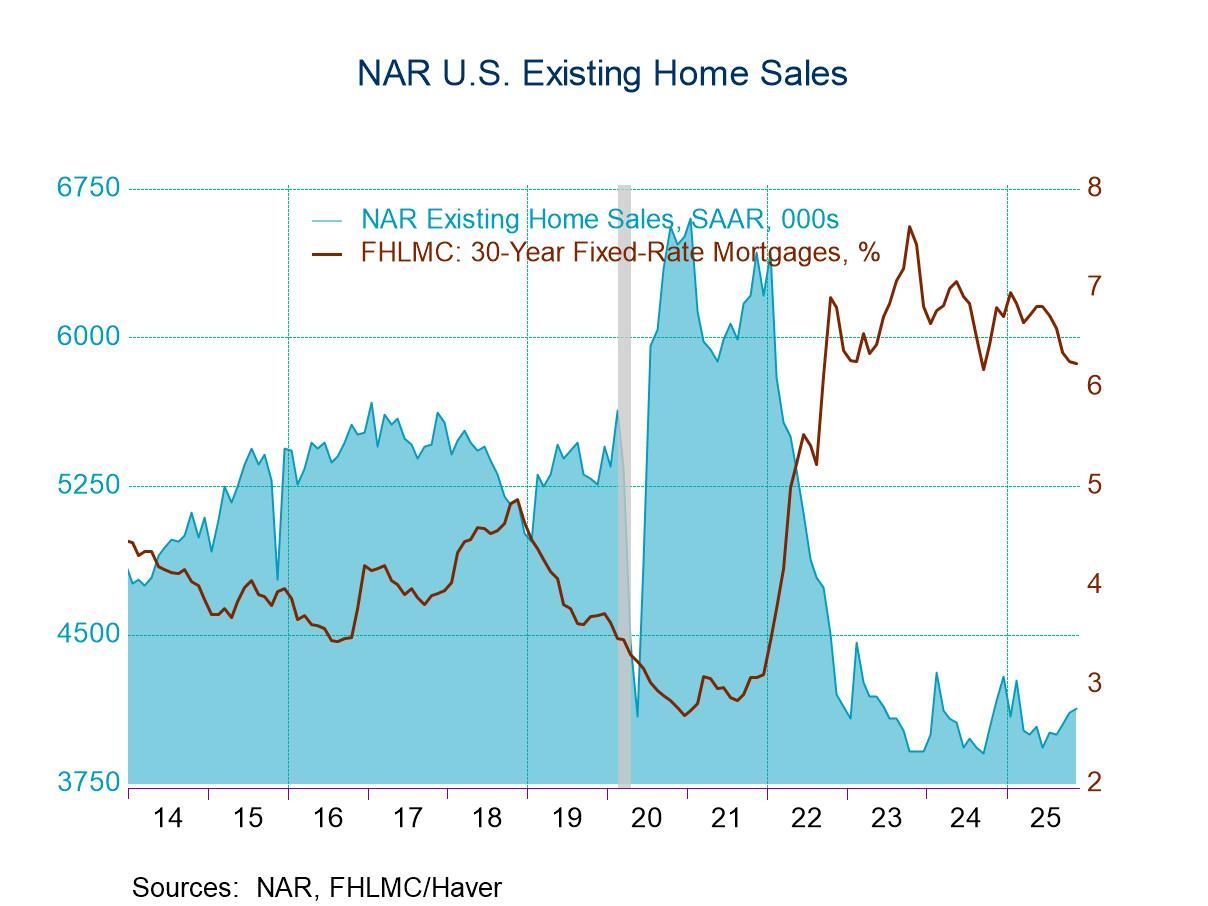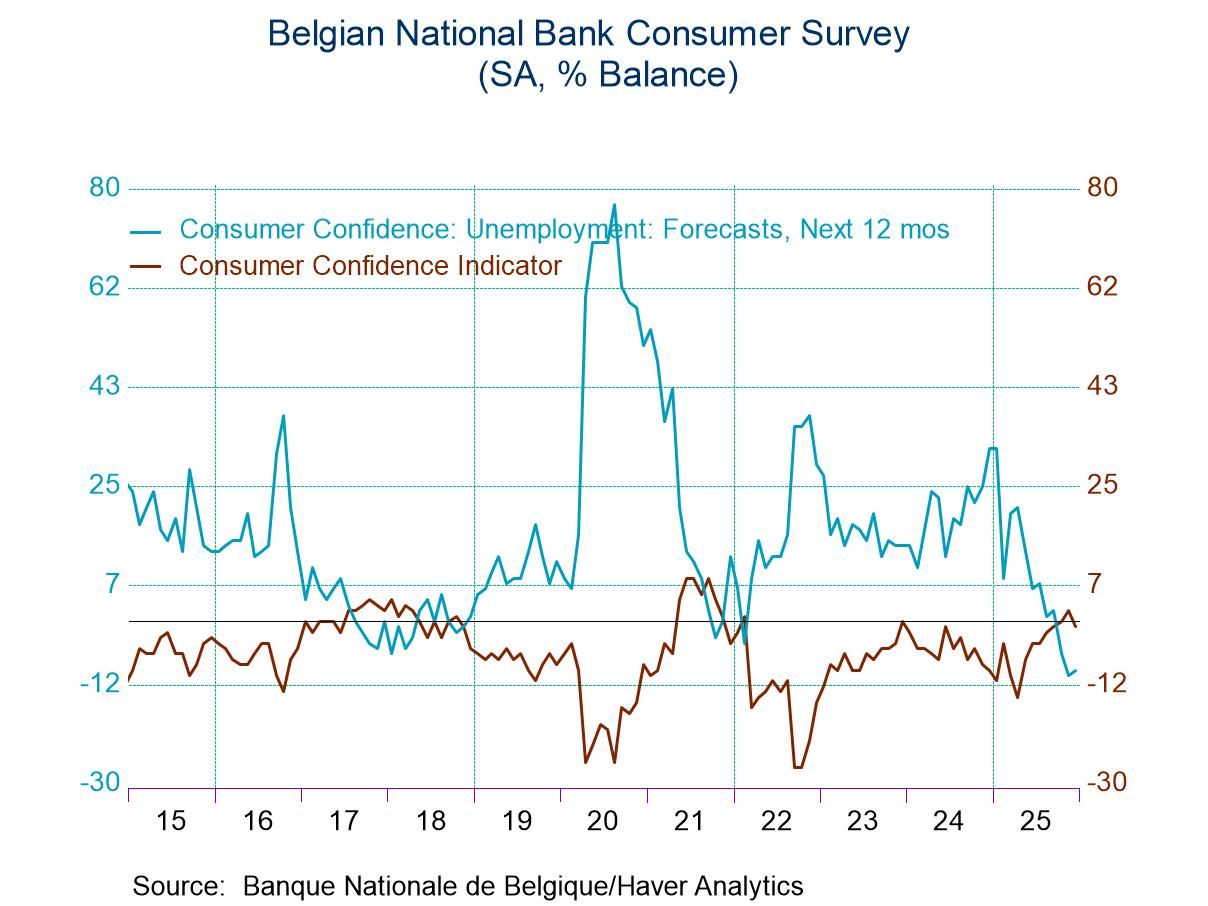 Global| Jun 12 2025
Global| Jun 12 2025Charts of the Week: What’s Consensus?
by:Andrew Cates
|in:Economy in Brief
Summary
Financial markets have experienced considerable gyrations in recent weeks, reflecting substantial shifts in investor expectations and heightened uncertainty, largely driven by ongoing US tariff policies. Over the past six months, consensus growth forecasts have seen notable downward revisions across most major economies, though these have been partially offset by modest upward revisions in the past month (chart 1). Concurrently, consensus inflation projections have diverged significantly, with upward pressures in the US contrasting with deflationary risks in China (chart 2). Compounding these US issues, renewed protectionism appears to be pressuring global supply chains again, potentially increasing inflation risks and sustaining elevated monetary policy uncertainty (charts 3 and 4). This week's particularly weak UK employment data highlight immediate domestic economic fragility, while longer-term economic stability remains challenged by persistently high real energy prices and complexities surrounding the energy transition (charts 5 and 6).
The Blue Chip growth consensus Our first chart this week depicting shifts in consensus growth expectations highlights significant divergences in the economic outlook over the past six months and the more recent one-month period. Major downward revisions over the past six months have prominently affected economies such as South Korea, Mexico, Australia and Canada, indicating heightened vulnerability to external shocks, particularly from disruptions linked to intensified US trade policies. Conversely, China has shown a slight improvement, possibly due to an effective policy response. The recent one-month adjustments, however, exhibit much smaller and generally modest upward revisions, suggesting some stabilization or cautious optimism amid ongoing uncertainties.
Chart 1: Shifts in the Blue Chip consensus for economic growth in 2025

The Blue Chip inflation consensus This next chart tracking consensus forecasts for CPI inflation in 2025 across the US, Euro area, and China reveals a striking divergence in inflation expectations. In the US, inflation projections rose steadily through late 2024 and early 2025, peaking above 3% before easing slightly. This upward drift likely reflects the lagged impact of the US economy's relative strength in 2024, including robust consumer demand and tight labour markets, rather than more recent tariff-related pressures. By contrast, Euro area forecasts have remained relatively low and stable, suggesting more subdued domestic dynamics and tighter policy. Meanwhile, China's CPI forecast has fallen sharply over the same period pointing to deepening demand-side weakness and lingering deflationary risks.
Chart 2: Shifts in the Blue Chip inflation consensus for 2025

Supply chain pressures Looking ahead, the tight correlation between the New York Fed’s Global Supply Chain Pressure Index and producer price inflation for advanced economies underscores the risks posed by US trade policies. As supply chain pressures potentially intensify—partly due to renewed protectionist measures—global producer price pressures could again escalate, creating renewed inflationary challenges and complicating central bank policy calibration.
Chart 3: Supply chain pressures versus PPI inflation

US policy uncertainty As the chart below illustrates, US monetary policy uncertainty remains elevated, even as it has eased from its recent peaks. This persistent uncertainty continues to drive market volatility, reflecting investor unease over the Federal Reserve’s future policy path in the face of tariff-related disruptions and inflationary pressures. The chart specifically shows a potentially valuable tool for tracking this uncertainty – the Kansas City Fed’s measure of Policy Rate Uncertainty (KC PRU). This index is constructed from the prices of financial options linked to future short-term interest rates—rates that closely track the federal funds rate—and captures one-year-ahead uncertainty at a daily frequency dating back to the late 1980s.
Chart 4: The Kansas City Fed’s policy rate uncertainty index

The UK labour market The UK labour market data released this week revealed a sharp deterioration, with substantial job losses indicated by payroll data alongside a rising unemployment rate. This surprising weakness not only signals immediate economic challenges but also complicates the BoE’s monetary policy response at a time when policymakers face persistent inflationary pressures and broader macroeconomic uncertainty.
Chart 5: UK labour market activity: employment versus unemployment

Energy and growth Over the longer term, the strong historical correlation between primary energy consumption and GDP growth in advanced economies underscores the critical role of energy in sustaining economic stability. Persistently high real energy prices and complex energy transition processes present significant obstacles, particularly for energy-intensive economies like the UK, which seek sustainable growth trajectories amid heightened geopolitical and trade uncertainties.
Chart 6: Energy consumption and economic growth in the OECD

Andrew Cates
AuthorMore in Author Profile »Andy Cates joined Haver Analytics as a Senior Economist in 2020. Andy has more than 25 years of experience forecasting the global economic outlook and in assessing the implications for policy settings and financial markets. He has held various senior positions in London in a number of Investment Banks including as Head of Developed Markets Economics at Nomura and as Chief Eurozone Economist at RBS. These followed a spell of 21 years as Senior International Economist at UBS, 5 of which were spent in Singapore. Prior to his time in financial services Andy was a UK economist at HM Treasury in London holding positions in the domestic forecasting and macroeconomic modelling units. He has a BA in Economics from the University of York and an MSc in Economics and Econometrics from the University of Southampton.






